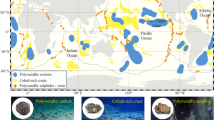Abstract
This paper studies the current available options for floating production platforms in developing deepwater oil fields and the potential development models of future oil and gas exploration in the South China Sea. A detailed review of current deepwater platforms worldwide was performed through the examples of industry projects, and the pros and cons of each platform are discussed. Four types of platforms are currently used for the deepwater development: tension leg platform, Spar, semi-submersible platform, and the floating production system offloading. Among these, the TLP and Spar can be used for dry tree applications, and have gained popularity in recent years. The dry tree application enables the extension of the drilling application for fixed platforms into floating systems, and greatly reduces the cost and complexity of the subsea operation. Newly built wet tree semi-submersible production platforms for ultra deepwater are also getting their application, mainly due to the much needed payload for deepwater making the conversion of the old drilling semi-submersible platforms impossible. These platforms have been used in different fields around the world for different environments; each has its own advantages and disadvantages. There are many challenges with the successful use of these floating platforms. A lot of lessons have been learned and extensive experience accumulated through the many project applications. Key technologies are being reviewed for the successful use of floating platforms for field development, and potential future development needs are being discussed. Some of the technologies and experience of platform applications can be well used for the development of the South China Sea oil and gas field.
Similar content being viewed by others
References
Chen W (2013). Going deeper: China’s offshore oil and gas industry. The Nineteenth International Offshore and Polar Engineering Conference, Osaka, Japan, 2009.
Geyer JF, Perryman SR, Irani MB (2009). Floating system integrity management of BP operated GOM deepwater production facilities. Offshore Technology Conference, Houston, USA, Paper No. 20137.
Kaster F, Barros M, Rossi R, Masetti I, Falkenberg E, Karlsen S. Waclawek I (1997). DICAS-A new mooring concept for FPSO’s. Offshore Technology Conference, Houston, USA, Paper No. 8439.
Luyties WH (2004). Na Kika — Novel Development in record water depth. Offshore Technology Conference, Houston, USA, Paper No. 16698.
Rainey R (2002). Brutus project overview: challenges and results. Offshore Technology Conference, Houston, USA, Paper No. 13990.
Simmon J (2005). The Okume Complex Project. Presentation on Society of Naval Architect and Marine Engineers, 25.
Wetch SB, Wybro PG. West Seno: Facilities Approach, Innovations and Benchmarking. Offshore Technology Conference, Houston, USA, Paper No. 16521.
Zhang D (2006). An approach using combined TLP with fixed platforms in developing China Shelf Oil & Gas Field. The Proceedings of the Seventh PACOMS of International Offshore and Polar Engineering, Dalian, China, 41–46.
Zhang, D, Wybro P, Kang Y (2013). Deepwater oil and gas development in South China Sea. Engineering Sciences, 11(4), 2–9.
Zhang, D, Wang C, Zhang T (2013). Tension Leg Platform project execution. Engineering Sciences, 11(4), 79–85.
Author information
Authors and Affiliations
Corresponding author
Additional information
Dagang Zhang received his Bachelor’s degree in Structural Engineering from Tongji University in China, and his Ph.D. from the University of California at Berkeley. Dr. Zhang specialized in Oil and gas field development, floating platform design, and offshore project management. He has designed 28 large offshore platforms and led more than 30 development projects. He also was the founder of two engineering companies: Sea Engineering, and DMAR Engineering. Dr. Zhang published more than 30 papers and books in recent years, and invented more than 10 patents. He has professional licenses for both states of California and Texas, and is a member of the Professional Management Institute and SNAME.
Yongjun Chen received his Bachelor’s degree in Naval Architecture from Huazhong University of Science and Technology in China, and his Master’s degree from Webb Institute, New York. Mr. Chen currently works at DMAR Engineering Inc. as the Naval Architecture Department Manager. Prior to joining DMAR in 2011. He had worked at the American Bureau of Shipping for 2 years, Technip USA for 5 years, and SBM Houston for 5 years. He specializes in the design of floating production systems (TLP, Spar, Semi, and FPSO), mooring systems, and riser systems. Currently He serves as the Secretary of the Ocean Technology Committee for ISOPE (International Society of Offshore and Polar Engineers).
Tianyu Zhang received both his Bachelor’ degree and Master’s degree from Harbin Engineering University. Mr. Zhang currently works at the DMAR Beijing office as a Senior Naval Architect. He has published 5 papers and participated in several international conferences.
Rights and permissions
About this article
Cite this article
Zhang, D., Chen, Y. & Zhang, T. Floating production platforms and their applications in the development of oil and gas fields in the South China Sea. J. Marine. Sci. Appl. 13, 67–75 (2014). https://doi.org/10.1007/s11804-014-1233-2
Received:
Accepted:
Published:
Issue Date:
DOI: https://doi.org/10.1007/s11804-014-1233-2




